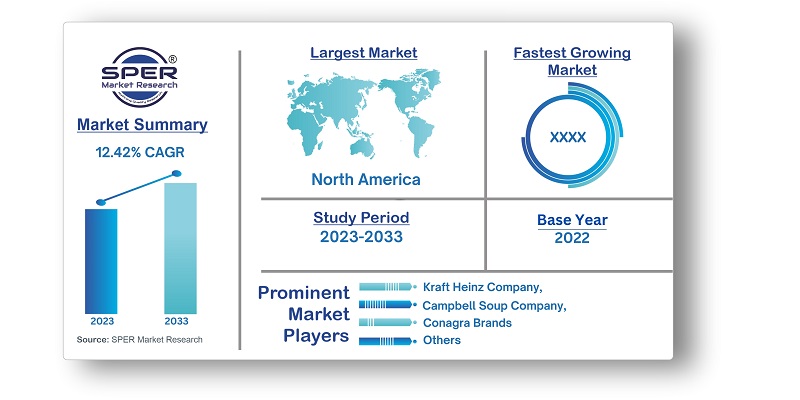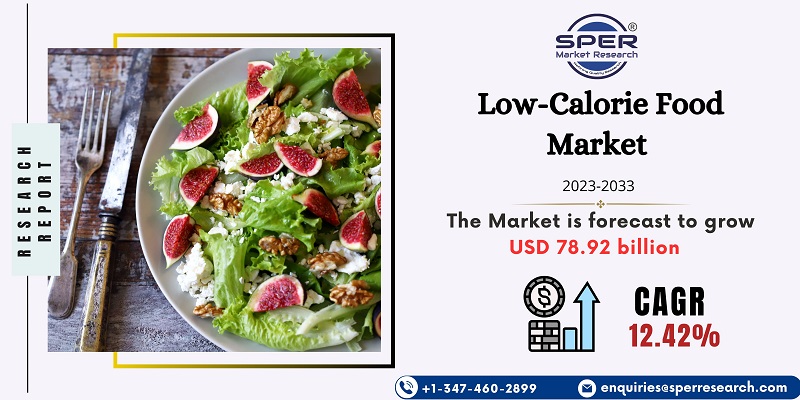
Low-Calorie Food Market Growth, Size, Trends, Demand, Revenue, Share and Future Competition
Low-Calorie Food Market Size- By Product Type, By Distribution Channel, By Packaging Type, By Ingredients, By Brand Positioning- Regional Outlook, Competitive Strategies and Segment Forecast to 2033
| Published: Nov-2023 | Report ID: FOOD2397 | Pages: 1 - 235 | Formats*: |
| Category : Food & Beverages | |||
- September 2022: Texas-based vegan ice cream company Nada Moo! introduced Frozen Bites. With only 50–70 calories per serving, the product is a low-calorie vegan dessert.
- July 2020: The American food ingredient manufacturer Ingredion Inc. purchased Pure Circle Limited for an undisclosed sum. The acquisition enables Ingredion to grow its specialties business and meet the demand for plant-based, low-calorie sugar substitutes around the world. Based in the United States, Pure Circle Limited is a pioneer and manufacturer of stevia sweeteners for the food and beverage sector.


| Report Metric | Details |
| Market size available for years | 2019-2033 |
| Base year considered | 2022 |
| Forecast period | 2023-2033 |
| Segments covered | By Product Type, By Distribution Channel, By Packaging Type, By ingredients, By Brand Positioning |
| Regions covered | North America, Asia-Pacific, Latin America, Middle East & Africa and Europe |
| Companies Covered | Kraft Heinz Company, Campbell Soup Company, Conagra Brands, Kellogg Company, Nestle, Unilever, Danone, Yili Group, Marico Limited, BRF S.A., Bunge Limited, Cargill Incorporated and others |
- Adults
- Children
- Diabetic patients
- Health conscious consumers
- Obese population
- Old-age
- Teens
- Others
| By Product Type: |
|
| By Distribution Channel: |
|
| By Packaging Types: |
|
| By Ingredients: |
|
| By Brand Positioning: |
|
- Global Low-Calorie Food Market Size (FY’2023-FY’2033)
- Overview of Global Low-Calorie Food Market
- Segmentation of Global Low-Calorie Food Market By Product Type (Snacks, Beverage, Frozen meals, Baked goods, Dairy products)
- Segmentation of Global Low-Calorie Food Market By Distribution Channel (Supermarket, hypermarket, convenience store, online retail store)
- Segmentation of Global Low-Calorie Food Market By Packaging Type (Bottles, Cans, Pouches)
- Segmentation of Global Low-Calorie Food Market By Ingredients (Natural sweeteners, Sugar substitutes, Low fat, Fat-free, Plant-based)
- Segmentation of Global Low-Calorie Food Market By Brand Positioning (Mainstream, Health-focused, Organic or natural, Specialty
- Statistical Snap of Global Low-Calorie Food Market
- Expansion Analysis of Global Low-Calorie Food Mark
- Problems and Obstacles in Global Low-Calorie Food Market
- Competitive Landscape in the Global Low-Calorie Food Market
- Impact of COVID-19 and Demonetization on Global Low-Calorie Food Market
- Details on Current Investment in Global Low-Calorie Food Market
- Competitive Analysis of Global Low-Calorie Food Market
- Prominent Players in the Global Low-Calorie Food Market
- SWOT Analysis of Global Low-Calorie Food Market
- Global Low-Calorie Food Market Future Outlook and Projections (FY’2023-FY’2033)
- Recommendations from Analyst
1.1. Scope of the report1.2. Market segment analysis
2.1. Research data source
2.1.1. Secondary Data2.1.2. Primary Data2.1.3. SPER’s internal database2.1.4. Premium insight from KOL’s
2.2. Market size estimation
2.2.1. Top-down and Bottom-up approach
2.3. Data triangulation
4.1. Driver, Restraint, Opportunity and Challenges analysis
4.1.1. Drivers4.1.2. Restraints4.1.3. Opportunities4.1.4. Challenges
4.2. COVID-19 Impacts of the Global Low-Calorie Food Market
5.1. SWOT Analysis
5.1.1. Strengths5.1.2. Weaknesses5.1.3. Opportunities5.1.4. Threats
5.2. PESTEL Analysis
5.2.1. Political Landscape5.2.2. Economic Landscape5.2.3. Social Landscape5.2.4. Technological Landscape5.2.5. Environmental Landscape5.2.6. Legal Landscape
5.3. PORTER’s Five Forces
5.3.1. Bargaining power of suppliers5.3.2. Bargaining power of buyers5.3.3. Threat of Substitute5.3.4. Threat of new entrant5.3.5. Competitive rivalry
5.4. Heat Map Analysis
6.1. Global Low-Calorie Food Market Manufacturing Base Distribution, Sales Area, Product Type6.2. Mergers & Acquisitions, Partnerships, Product Launch, and Collaboration in Global Low-Calorie Food Market
7.1. Global Low-Calorie Food Market Value Share and Forecast, By Product Type, 2023-20337.2. Baked goods7.3. Beverages7.4. Dairy products7.5. Frozen meals7.6. Snacks
8.1. Global Low-Calorie Food Market Value Share and Forecast, By Distribution Type, 2023-20338.2. Convenience Store8.3. Hypermarket8.4. Online Retail Store8.5. Supermarket
9.1. Global Low-Calorie Food Market Value Share and Forecast, By Packaging Type, 2023-20339.2. Bottles9.3. Cans9.4. Pouches
10.1. Global Low-Calorie Food Market Value Share and Forecast, By Ingredients, 2023-203310.2. Fat-free10.3. Low fat10.4. Natural sweeteners,10.5. Plant-based10.6. Sugar substitutes,
11.1. Global Low-Calorie Food Market Value Share and Forecast, By Brand Positioning, 2023-203311.2. Health-focused11.3. Mainstream11.4. Organic or natural11.5. Specialty
12.1. Global Low-Calorie Food Market Size and Market Share
13.1. Global Low-Calorie Food Market Size and Market Share By Product Type (2019-2026)13.2. Global Low-Calorie Food Market Size and Market Share By Product Type (2027-2033)
14.1. Global Low-Calorie Food Market Size and Market Share By Distribution Channel (2019-2026)14.2. Global Low-Calorie Food Market Size and Market Share By Distribution Channel (2027-2033)
15.1. Global Low-Calorie Food Market Size and Market Share By Packaging Type (2019-2026)15.2. Global Low-Calorie Food Market Size and Market Share By Packaging Type (2027-2033)
16.1. Global Low-Calorie Food Market Size and Market Share By Ingredients (2019-2026)16.2. Global Low-Calorie Food Market Size and Market Share By Ingredients (2027-2033)
17.1. Global Low-Calorie Food Market Size and Market Share By Brand Positioning (2019-2026)17.2. Global Low-Calorie Food Market Size and Market Share By Brand Positioning (2027-2033)
18.1. Global Low-Calorie Food Market Size and Market Share By Region (2019-2026)18.2. Global Low-Calorie Food Market Size and Market Share By Region (2027-2033)18.3. Asia-Pacific
18.3.1. Australia18.3.2. China18.3.3. India18.3.4. Japan18.3.5. South Korea18.3.6. Rest of Asia-Pacific
18.4. Europe
18.4.1. France18.4.2. Germany18.4.3. Italy18.4.4. Spain18.4.5. United Kingdom18.4.6. Rest of Europe
18.5. Middle East and Africa
18.5.1. Kingdom of Saudi Arabia18.5.2. United Arab Emirates18.5.3. Rest of Middle East & Africa
18.6. North America
18.6.1. Canada18.6.2. Mexico18.6.3. United States
18.7. Latin America
18.7.1. Argentina18.7.2. Brazil18.7.3. Rest of Latin America
19.1. BRF SA
19.1.1. Company details19.1.2. Financial outlook19.1.3. Product summary19.1.4. Recent developments
19.2. Bunge Limited
19.2.1. Company details19.2.2. Financial outlook19.2.3. Product summary19.2.4. Recent developments
19.3. Campbell Soup Company
19.3.1. Company details19.3.2. Financial outlook19.3.3. Product summary19.3.4. Recent developments
19.4. Cargill Incorporated
19.4.1. Company details19.4.2. Financial outlook19.4.3. Product summary19.4.4. Recent developments
19.5. Conagra Brands
19.5.1. Company details19.5.2. Financial outlook19.5.3. Product summary19.5.4. Recent developments
19.6. Danone
19.6.1. Company details19.6.2. Financial outlook19.6.3. Product summary19.6.4. Recent developments
19.7. Kellogg’s Company
19.7.1. Company details19.7.2. Financial outlook19.7.3. Product summary19.7.4. Recent developments
19.8. Kraft Heinz Company
19.8.1. Company details19.8.2. Financial outlook19.8.3. Product summary19.8.4. Recent developments
19.9. Unilever
19.9.1. Company details19.9.2. Financial outlook19.9.3. Product summary19.9.4. Recent developments
19.10. Yili Group
19.10.1. Company details19.10.2. Financial outlook19.10.3. Product summary19.10.4. Recent developments
19.11. Others
SPER Market Research’s methodology uses great emphasis on primary research to ensure that the market intelligence insights are up to date, reliable and accurate. Primary interviews are done with players involved in each phase of a supply chain to analyze the market forecasting. The secondary research method is used to help you fully understand how the future markets and the spending patterns look likes.
The report is based on in-depth qualitative and quantitative analysis of the Product Market. The quantitative analysis involves the application of various projection and sampling techniques. The qualitative analysis involves primary interviews, surveys, and vendor briefings. The data gathered as a result of these processes are validated through experts opinion. Our research methodology entails an ideal mixture of primary and secondary initiatives.



Frequently Asked Questions About This Report
PLACE AN ORDER
Year End Discount
Sample Report
Pre-Purchase Inquiry
NEED CUSTOMIZATION?
Request CustomizationCALL OR EMAIL US
100% Secure Payment






Related Reports
Our Global Clients
Our data-driven insights have influenced the strategy of 200+ reputed companies across the globe.






















